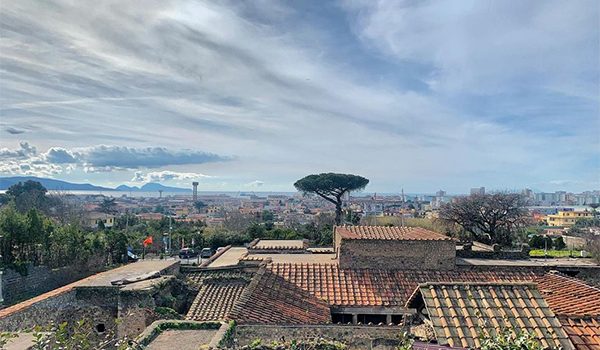LEGALITY AND PROTECTION OF THE AREA
TWO SIGNIFICANT OPERATIONS CONCLUDED AT POMPEII AND STABIAE REGARDING THE RESTORATION OF LEGALITY AND COMBATTING ILLEGAL CONSTRUCTION
Two significant legal actions have been concluded in recent months by the Protection Office of the Archaeological Park, at Pompeii and Stabiae, with the state acquisition of the area opposite the historic entrance of the Villa of the Mysteries, and the taking possession of the rural property located near the Villa San Marco at Castellammare, which had for years been illegally occupied.
Both interventions bring complex and long-standing processes to a close, which in addition to combatting legal violations in the area, will make it possible to launch appropriate valorisation operations on the sites and attend to the protection of the surrounding areas, courtesy of the fruitful collaboration with the Public Prosecutor’s Office of Torre Annunziata.
On the 19th February 2021, the area overlooking the historic entrance to the Villa of the Mysteries, which houses an old farmstead that had been illegally expanded over the years, was acquired by the state and transferred to the possession of the Park. The operation was conducted with the assistance and support of the Carabinieri.
The process of acquisition of the areas had been initiated in 2006 but without reaching a conclusion, before resuming in 2017 with the commencement of the expropriation procedure that today has finally been completed.
The Park will at last be able to redevelop the area surrounding the ancient Villa, which is part of a UNESCO World Heritage Site, removing those illegal structures which had been erected since 1989 and opposed in vain, and will have the opportunity to extend the archaeological excavation, exploring and shedding light on its relationship to the city of Pompeii and the surrounding territory.
Similarly, on the 4th January 2021 at Stabiae, possession was taken of the agricultural structure and related land located on the Varano hill within the territory of Castellammare di Stabia.
The structure in question is an old farmstead, which stands near the archaeological site of Villa San Marco, above the archaeological structures of the nymphaeum of the Roman villa within the site of ancient Stabiae, in an area which was declared to be of special archaeological interest in 1951.
Following the purchase and sale of these assets by private individuals in 1992, the Archaeological Park of Pompeii exercised the right of pre-emption, but taking possession of the assets had been impeded by the illegal occupation by the purchasers.
This occupation was brought to an end thanks to the issuance of an eviction notice and subsequent taking possession of the assets which, while having been conducted with the valuable support of the police, did not result in the need to resort to forced eviction.
From the point of view of the valorisation of the archaeological site of Stabiae, the short term objective is to provide for an operation capable of concurrently reconciling the conservation and reuse of the structure, along with the extension of the Villa San Marco excavations.
The operations carried out form part of the broader work of the Cultural Heritage Protection Office of the Park which, following the reorganisation of the Ministry with Ministerial Decree No. 44 of 23/01/2016, has assumed all of the responsibilities of protection which fall within the competences of the Superintendencies of Archaeology, Fine Arts and Landscape, in the areas surrounding the archaeological sites within its jurisdiction (Pompei, Torre Annunziata (Oplontis), Scafati, Castellammare di Stabia, Poggiomarino and Torre del Greco).
Starting with the areas closest to the archaeological sites, other operations are currently underway that are aimed at combatting illegal construction and the redevelopment of the area, including the demolition of the Chalet Paradiso, an illegal kiosk located in a privately owned area within the excavations of Pompeii, and the reacquisition of the surrounding land, the removal of illegal signage and in the areas under indirect protection, the redevelopment of Piazza Esedra and the areas where itinerant trade is conducted.
These are operations for which it is hoped to be able to count on the collaboration of the municipal administration and other relevant local authorities.


